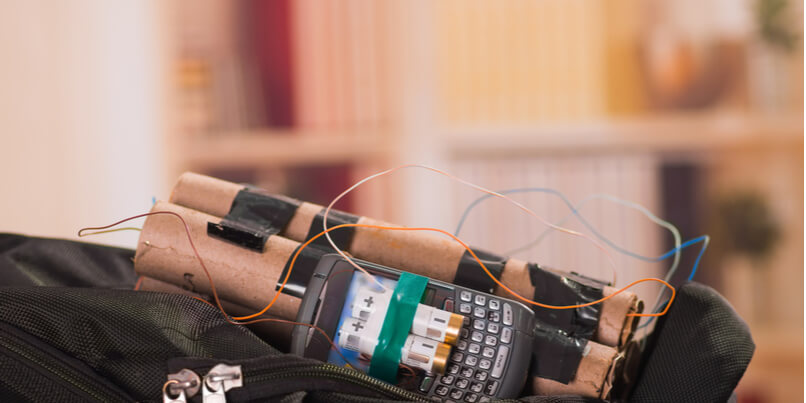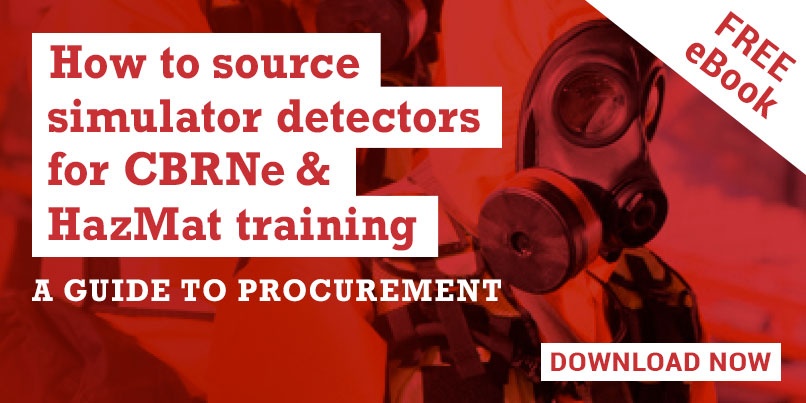 The provision of authentic, hands-on training scenarios can play an invaluable role in preparing HazMat teams and first responders for the raft of increasingly unconventional and unpredictable chemical threats that they may be required to handle.
The provision of authentic, hands-on training scenarios can play an invaluable role in preparing HazMat teams and first responders for the raft of increasingly unconventional and unpredictable chemical threats that they may be required to handle.
The often irregular nature of these incidents, together with the diversity of the environments in which they can be found, can pose significant challenges for instructors as they seek to provide training experiences that are as realistic as possible.
In the majority of cases, training with actual chemicals or gases simply isn't an option, whether due to the significant health and safety implications or the considerable administrative burden.
The use of simulator detector technology, however, can offer a practical and workable solution that allows students to safely experience all of the characteristics of a range of HazMat threats in a carefully controlled setting.
Using simulator detectors, the conditions that can be enacted are limitless.
In this post, we explore eight simple scenarios that can be incorporated into HazMat training programs with minimum effort for maximum effect.
1. A suspect vehicle
In this example, the instructor can select to place the simulated chemical or gas in a specific location within a vehicle - for example in the luggage storage compartment, or concealed within a package hidden underneath a seat.
If placed in the luggage compartment, the difficulty of detection can be controlled by the trainer by changing the level.
If the source is placed under the seat, the scenario can be made more realistic by having a window slightly open and the simulation source set so a reading will only be obtained directly next to the gap in the window. The instructor might also choose to place the simulation source under the wheel arch of a vehicle.
If a low reading (representing a residual CW agent) is required, then the instructor controller can be set to partial decontamination.
2. A suspect package
In this scenario, the simulation source can be easily concealed in a luggage case, rucksack etc. Alternatively, the package can be placed in a room, in a vehicle, on a train or other mode of public transport, or could be hidden amongst other packages. If required, the source can be set to provide a reading only once the student is in close proximity to the item.
3. Personal decontamination
This scenario can be easily set up by concealing the source within a person’s clothing. The instructor can then observe as the student searches for contamination and commences decontamination.
As with the contaminated vehicle scenario, the instructor controller can be pre-set to obtain a low reading which will reflect the presence of a residual CW agent.
5. A simulated CW weapon / IED
In this case the simulation source can be hidden within a weapon housing and the student then tasked with obtaining a reading as they approach. The weapon can also be “wrapped” to make the source harder to detect.
In the case of an improvised explosive device (IED) threat, the source can be placed in any location. The instructor controller can then be set to 'full response' to represent a rapid release, or 'partial response' to recreate the conditions of a slower release.
5. Identifying a false positive
In this exercise, the trainer can set a simulation source and place it in a location that would be most likely to trigger a false positive reading on an actual detector - for example, in a building where industrial chemicals may be stored.
6. Room breach training
In this example, the instructor can set the simulation source so that a reading is obtained only when the door to the room is checked at the edges.
When the door is breached, the reading will increase without the students having to enter the room.
7. Building search training (pre-entry)
The simulation source can be placed within the building so the emission is only detectable through an open window - and when the detector sensor is placed directly through that window.
This scenario is an excellent way to teach students the importance of assessing a building prior to entry.
8. Search training
A standard locker room with multiple cupboards, can provide an ideal setting for a search training scenario.
The instructor can simply place a simulation source within one of the lockers so a reading will only be registered when the student is very close.
As the above scenario suggestions illustrate, simulation sources can be hidden in any location, and the emission levels can be easily varied to suit the specific needs of each exercise.
Realistic CBRNe training scenarios have an important role to play in helping students gain the confidence and ability to detect and monitor a wide range of unpredictable and irregular chemical hazards.
When live-agent training simply isn't an option, the use of innovative detector equipment and safe simulation sources can provide an authentic, efficient and cost-effective solution that ensures there is zero safety risk to the trainees, the instructor or the environment. To learn more about how to research, source, and obtain simulator detectors for HazMat and CBRNe training, download our free guide.




